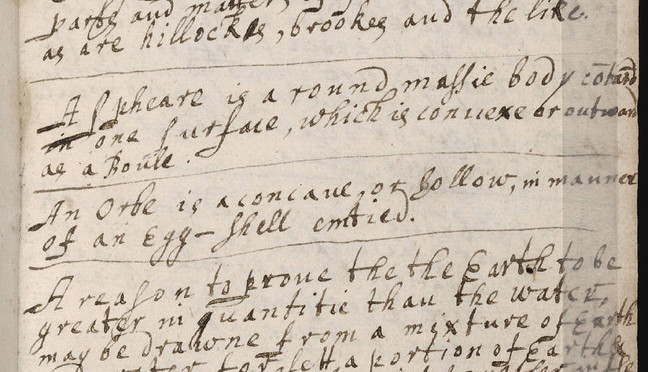I love to collect quotes. I immediately jot them down whenever I hear one that I want to keep. I have scraps of paper floating around my apartment with quotes scrawled on them. I painted my wall with chalkboard paint in the hopes that I could contain all of my most beloved quotes right in view. My “favorite quotes” on Facebook section is as long as a novel.
I realized that I needed a better system in order to contain all of these beloved quotes. I longed for a single place that I could put them that would keep them organized and accessible. A place where I could go back and find these quotes, and somewhere that I could write these thoughts down whenever they came to me. I realized that Shakespeare contained the answer.
A standard practice for schoolboys in Shakespeare’s time was called “common placing”. It is a notebook, called a commonplace book, that is divided into headings. Then as a person reads a book, whenever they come across a quote that they would like to hold onto, they copy that quote into their commonplace book under the corresponding heading.
Common placing was such a common practice in England at the time that writing was often geared towards it. Writers would purposefully create quotes that they thought would be good for common placing, and they would place these throughout their writing. Have you ever seen a book that has a finger pointing towards a section of text? That was a printing symbol to alert a reader that this is a good quote to put in their commonplace books.
These commonplace books were useful because they created an easy way for someone to look back at the quotes that they had enjoyed throughout their reading. The headings further help to organize how they would find those quotes, if they ever needed them.
Though the headings are the most useful organizational tool of the commonplace book, they are also the most difficult. When creating headings in the commonplace book, in an ideal world the headings would be alphabetical. This may not work out in practicality, though, because you may not be completely sure what headings you would like to have at the beginning of the process.
The way that I have been making my commonplace book is to place headings in my notebook as I go along. The issue with this method is that I have to guess how many pages I will need between each heading in order to maintain the alphabetical order. It has been working so far, since I just started my commonplace book recently but, in the future, it is a system that is bound to break. Eventually, I will have a perfect quote to copy down but will have run out of space in area for the heading that I want. In a way, I enjoy this aspect of common placing, since it will create a unique experience for my own book that no one else could replicate.
However, if this is not your style, then there is one way in our modern world that people are able to subvert this problem. Today you are able to do an electronic commonplace book. If you put these headings in a Word document, then you can edit that document whenever you would like. This allows you to rearrange your headings and even your quotes if you would like.
The technology available to those who enjoy common placing has certainly changed since Shakespeare’s time as a schoolboy, but the benefits of keeping a commonplace book have not changed. I no longer needs scraps of paper floating around my apartment or a chalkboard wall that never seems big enough. Instead I can fill my book with the quotes that I love to read. Not only will it provide daily inspiration, it can serve as a testament to all the great works of literature that I have read. It will become a collection of not only quotes, but experiences. Do you have any favorite quotations? Share them in the comments below!
Discover more from UCWbLing
Subscribe to get the latest posts sent to your email.


